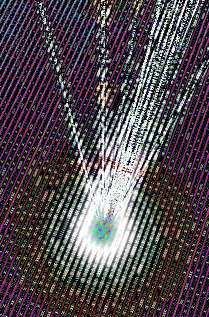New success for quantum tech
 Quantum computing experts have achieved something thought to be years away: the fault-tolerant teleportation of a logical qubit.
Quantum computing experts have achieved something thought to be years away: the fault-tolerant teleportation of a logical qubit.
The breakthrough, published in Science, demonstrates the movement of quantum information without physically moving anything through space - a key step towards building powerful, error-free quantum computers.
While teleportation has been demonstrated in science fiction, in quantum computing, it refers to transferring quantum information from one place to another.
Researchers at computing company Quantinuum achieved this with a very high success rate - 97.5 per cent accuracy.
This result moves the field closer to creating large-scale quantum computers that can perform complex calculations far beyond today’s processors.
What makes the achievement even more significant is that the teleportation was “fault-tolerant”.
This means the process was designed to correct any small errors that might occur, keeping the information safe and accurate throughout.
This ability to handle errors is essential because quantum states are incredibly delicate, and even the slightest disruption can cause problems.
Quantinuum’s work shows that their system can not only teleport information but also keep it protected from errors.
The teleportation was done at the “logical” level, meaning that instead of moving the state of a single quantum bit (qubit), the information was spread across multiple qubits working together. This is known as a logical qubit.
Moving information in this way is more complex but also much closer to how quantum computers will need to operate in the future.
According to Quantinuum, this is “the first time that an arbitrary quantum state has been teleported at the logical level”.
The company’s success comes after taking on a challenge from the US Government’s Intelligence Advanced Research Projects Activity (IARPA), which aimed to push forward the development of fault-tolerant quantum computing.
IARPA’s goal was to see if teleportation could be done with high accuracy while also correcting errors.
Quantinuum met this challenge using its Quantum Charge Coupled Device (QCCD) technology, which allows for great flexibility in handling qubits.
Quantinuum says the achievement not only marks a scientific milestone but also shows the commercial readiness of its quantum systems.
The experiments were run on the company’s H-Series quantum processors, which are available to consumers.
The results are not just a one-time demonstration on a special system but part of the regular performance of their machines, the company says.
Another interesting part of this research was the use of a method called lattice surgery. This technique involves carefully moving and merging quantum information without needing to rearrange the physical components.
Though the process had a slightly lower success rate of 85.1 per cent, it is still an important tool for future quantum computers, particularly in systems where the qubits are fixed in place.
Quantinuum also developed a special programming language called Simple Logical Representation (SLR), which allowed the researchers to design the teleportation process at a higher level than usual.
This advance is a promising step towards making quantum computers easier to program and use in the future, when all quantum operations will need to run with error correction.








 Print
Print